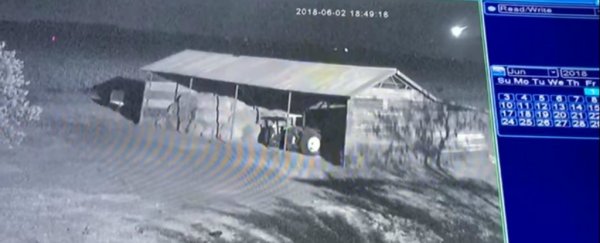Witnesses reported a fireball streaking across the sky above Botswana on Saturday night.
The asteroid hurtling toward Earth at 10 miles (16 km) a second looked like it could be the harbinger of catastrophe. A webcam in a rural area west of Johannesburg captured it, showing a luminous orb igniting the sky in a bright flash.
NASA had only discovered the asteroid on Saturday and determined it was on a collision course for the planet, charted for entry in a vast expanse from Southern Africa and across the Indian Ocean to New Guinea and given the name 2018 LA.
The reality of the asteroid's fiery end was less dramatic than the video shows. The asteroid was estimated at just six feet (1.8 metres) across, otherwise known as boulder-sized, NASA's Jet Propulsion Laboratory said in a statement.
It burned up "several miles" above the Earth's surface.
NASA and space enthusiasts do not get many opportunities like this. Asteroid 2018 LA was only the third asteroid discovered on an impact trajectory, the agency said, and just the second time a high probability of impact was determined ahead of time.
The last predicted impact was asteroid 2014 AA, and it too was discovered only hours before it entered the atmosphere over the Atlantic Ocean on New Year's Day in 2014, NASA said.
"[T]his real-world event allows us to exercise our capabilities and gives some confidence our impact prediction models are adequate to respond to the potential impact of a larger object," said Lindley Johnson, an official at NASA's Planetary Defense team, which tracks and warns of asteroids that may pose a threat to the planet.
 The discovery observations of Asteroid 2018 LA. (NASA/JPL-Caltech/CSS-Univ. of Arizona)
The discovery observations of Asteroid 2018 LA. (NASA/JPL-Caltech/CSS-Univ. of Arizona)
Asteroids are small remnants of violent collisions in the solar system's history and formed around 4.5 billion years ago.
They are typically composed of rock-forming minerals like olivine and pyroxene but often contain iron and nickel, NASA said.
The Asteroid Belt between Mars and Jupiter contains hundreds of thousands of asteroids more than half a mile in size or more, with millions of smaller objects tumbling in space.
Asteroid 2018 LA was first discovered by the NASA-funded Catalina Sky Survey operated by the University of Arizona, the agency said. NASA linked to the video in its statement, and the publisher said on YouTube the video is from his father's South African farm.
NASA relies on a patchwork of observers to track what it calls near-Earth asteroids, the agency explained in a video.
Constantly scanning telescopes capture images of the sky and movement through photos over time triggers a comparison of known objects in a database.
If the object is unknown, the agency will review the object and expedite the analysis if experts determine it will streak close to the Earth. Astronomers from NASA, other space agencies and even amateur enthusiasts then join in to refine the trajectory.
2018 © The Washington Post
This article was originally published by The Washington Post.
